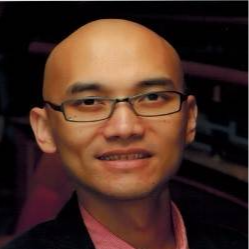
Jiang Li
Work place: Computer Science and Information Technology, Austin Peay State University (APSU), Clarksville, TN 37044, USA
E-mail: lij@apsu.edu
Website: https://www.apsu.edu/csci/lij/
Research Interests: Software Engineering, Distributed Computing, Image Processing, Data Mining, Data Structures and Algorithms
Biography
Jiang Li, Ph.D.
Professor, Graduate Coordinator
Dr. Jiang Li joined the Department of Computer Science and Information Technology at Austin Peay State University after receiving his Ph.D. from University of Nebraska – Lincoln in 2003. He also holds B.S. and M.S. degrees from Beijing Institute of Technology.
Dr. Li’s research interest is in Data Mining, Machine Learning, Image Processing, Software Engineering, and Distributed Computing. He has published over 20 articles in refereed journals and conference proceedings.
Author Articles
Development of a Novel Computer Application to Teach Counting in K-2 Classroom using the Unified Process Method
By Jiang Li Ling Wang Lacey L. Williams Christina A. Allanc
DOI: https://doi.org/10.5815/ijmecs.2015.10.01, Pub. Date: 8 Oct. 2015
Classroom teachers of Kindergarten, 1st Grade, or 2nd Grade often use the Hundreds Chart puzzles to teach children the basic mathematical knowledge and skills like counting. Computer programs have been developed to help them to create puzzle sheets by cutting out the numbers, but students still need to solve the puzzles on the printed paper. This study designs and implements a computer application named Hundred Acorn Forest as an instructional method to teach basic counting skills with the Hundreds Chart puzzles using the Unified Process method. The application not only offers an easy way for classroom teachers to create and edit puzzles based on patterns, but also engages students in a unique interactive game play environment, which helps to maintain their interests of learning. In addition, the video playback that demonstrates the process of students solving the puzzle provides classroom teachers valuable information to set up levels of control and consistency that have not been available before.
[...] Read more.Texture Analysis of Remote Sensing Imagery with Clustering and Bayesian Inference
By Jiang Li William Rich Donald Buhl-Brown
DOI: https://doi.org/10.5815/ijigsp.2015.09.01, Pub. Date: 8 Aug. 2015
Texture is one of the most significant characteristics for retrieving visually similar patterns in remote sensing images. Traditional approaches for texture analysis are based on symbolic descriptions and statistical methods. This study proposes a new method to extract and classify texture patterns from multispectral Landsat TM satellite images using optimized clustering and probabilistic inference. After the images are preprocessed with Principal Component Analysis and decomposed into regions of interest, Gabor wavelets are computed for each region in the first component image to obtain texture feature vectors. An adapted k-means clustering algorithm with optimized number of clusters and initial starting centers generates training and testing data for Bayes Point Machine classifiers. The classifiers may run in the online mode for binary classification and the batch mode for multi-class classification. The experimental results show the effectiveness of the proposed classification method and its potentials in other image texture pattern recognition applications.
[...] Read more.Other Articles
Subscribe to receive issue release notifications and newsletters from MECS Press journals